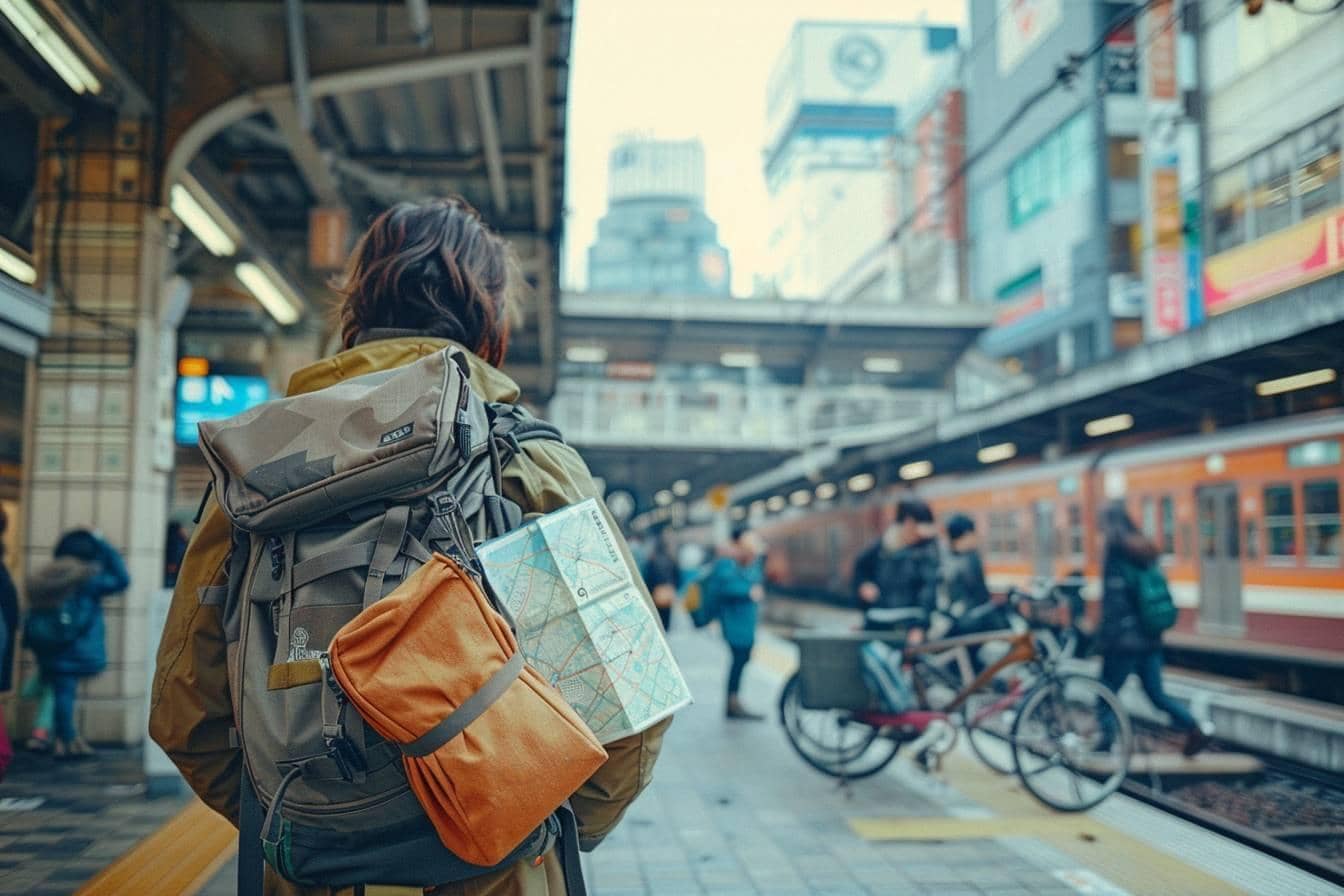Traveling through Japan is like stepping into a beautifully complex tapestry of ultra-modern cities intertwined with timeless cultural charms.
Having navigated the island from Hokkaido’s snowy peaks to Okinawa’s subtropical beaches, I’ve gathered experiences and insights that elevate mere travel tips into a guide for the soulful explorer.
Whether zipping between cities on sleek Shinkansen or wandering ancient paths by bicycle, Japan offers myriad ways to immerse in its diverse landscapes.
In this article
- Mastering the JR lines: your gateway to Japan's wonders
- Exploring cities by bicycle: unveiling hidden gems
- Embracing the efficiency of Tokyo's public transit
- Navigating with ease across the land of the rising sun
Mastering the JR lines: your gateway to Japan’s wonders
One of the first things any globetrotter should acquaint themselves with is the Japan Rail (JR) system. The JR lines are not just a mode of transport; they’re your all-access pass to Japan’s geographical and cultural diversity.
I remember my first ride on the Shinkansen, marveling at how smoothly and swiftly it cut through the countryside, bringing me from the vibrant heart of Tokyo to the serene and historic streets of Kyoto in mere hours.
This experience isn’t just about efficiency; it’s a chance to witness the unfolding landscape of Japan, from urban sprawl to scenic rice fields, all from your window seat.
But the JR lines are more than just the Shinkansen. They encompass a vast network of local trains and buses, ensuring you can reach even the most secluded spots. For instance, taking the JR line to the deep, green forests of Yakushima introduced me to landscapes I’d only seen in Studio Ghibli films.
The key here is the Japan Rail Pass. Available only to foreign tourists, this pass grants unlimited travel on most JR trains nationwide, including certain Shinkansen lines, for a fixed price. It’s a golden ticket to exploration, saving both time and money.
Pro tip
Always reserve your Shinkansen seats in advance, especially during peak travel seasons. While spontaneous adventures are the essence of travel, securing your seat ensures a stress-free journey amidst the beauty of Japan’s changing seasons.
Exploring cities by bicycle: unveiling hidden gems
Cycling through Japan’s cities and countryside reveals layers of beauty and tradition hidden from the hurried traveler. There’s an indescribable charm in pedaling along the narrow lanes of Kyoto’s Gion district or alongside Nara’s peaceful deer parks.
Bicycles offer a pace of travel that encourages pause and appreciation—a pause to admire the intricate details of a temple gate, a moment to relish the serene beauty of a hidden garden.
Bike rentals are readily available throughout Japan, and many cities have implemented bike-friendly policies providing clear paths and rental services. For a leisurely but enlightening day, cycling around the Arashiyama bamboo forest was an experience that stayed with me.
The whisper of the bamboo, the gentle inclines, and the quaint tea houses along the route were far more intimate at the speed of a bicycle.
Travel insight
In Tokyo, venture beyond the metropolis on a bike to explore the Edo-Tokyo Open Air Architectural Museum. It’s an enriching journey back in time, offering insights into Japan’s architectural evolution, from thatched roofs to merchant houses, all accessible via hidden cycling paths that skirt around the city’s bustling edges.

Embracing the efficiency of Tokyo’s public transit
Tokyo’s trains and subway system are a marvel of efficiency, a pulsating network that mirrors the city’s dynamic rhythm. As someone who’s spent countless hours on public transit across the globe, I know Tokyo stands out for its punctuality, cleanliness, and ease of navigation.
The metro lines, color-coded and accompanied by English signs, form an extensive web connecting every nook and cranny of the city.
For travelers, Pasmo or Suica cards are indispensable tools for seamless travel across Tokyo’s public transit. These rechargeable cards can be used on trains and buses and purchased at vending machines and convenience stores.
My most memorable day was weaving through Tokyo’s diverse districts, from the historic Asakusa to the trendy streets of Shibuya, all enabled by the swipe of my Suica card.
An adventure to remember
Venturing to lesser-known neighborhoods like Nakameguro during cherry blossom season, when the blooms arch over serene canals, was effortlessly accessible via a short subway ride, underscoring the beauty and efficiency of Tokyo’s transit system.
Navigating with ease across the land of the rising sun
The essence of traveling through Japan is captured in the diversity of its landscapes, the richness of its cultures, and the advancements of its public transportation systems.
From speeding Shinkansen bullets whisking you across prefectures to serene bicycle rides under the shadows of cherry blossoms, each mode of transport offers a unique perspective on this magnificent country.
While navigating Japan’s extensive and sophisticated public transportation network might initially seem daunting, the reality is far from it. Adventurers can explore Japan’s vast reaches and hidden alleys with a JR Pass and a rented bike, each turn and track promising a new revelation.
My journey across this fascinating land was not just about the places I visited. Still, Japan’s remarkable transit systems facilitated the moments of connection and understanding fostered by the journey.
So, whether you’re planning an expedition to uncover the secrets of Japan’s ancient temples, indulge in its world-renowned cuisine, or wander through its verdant landscapes, remember: the journey is as significant as the destination. And in Japan, the journey is nothing short of extraordinary.




